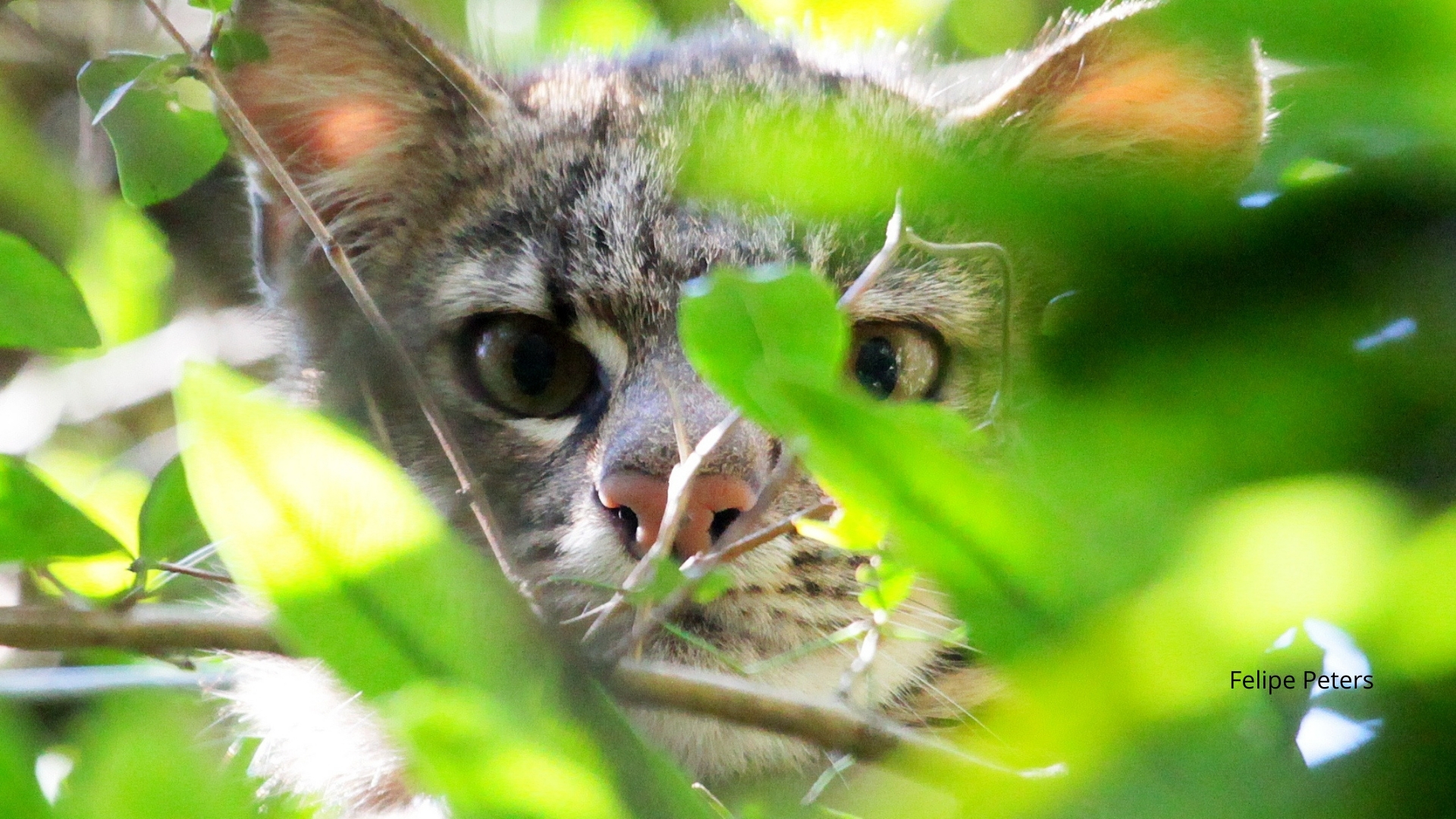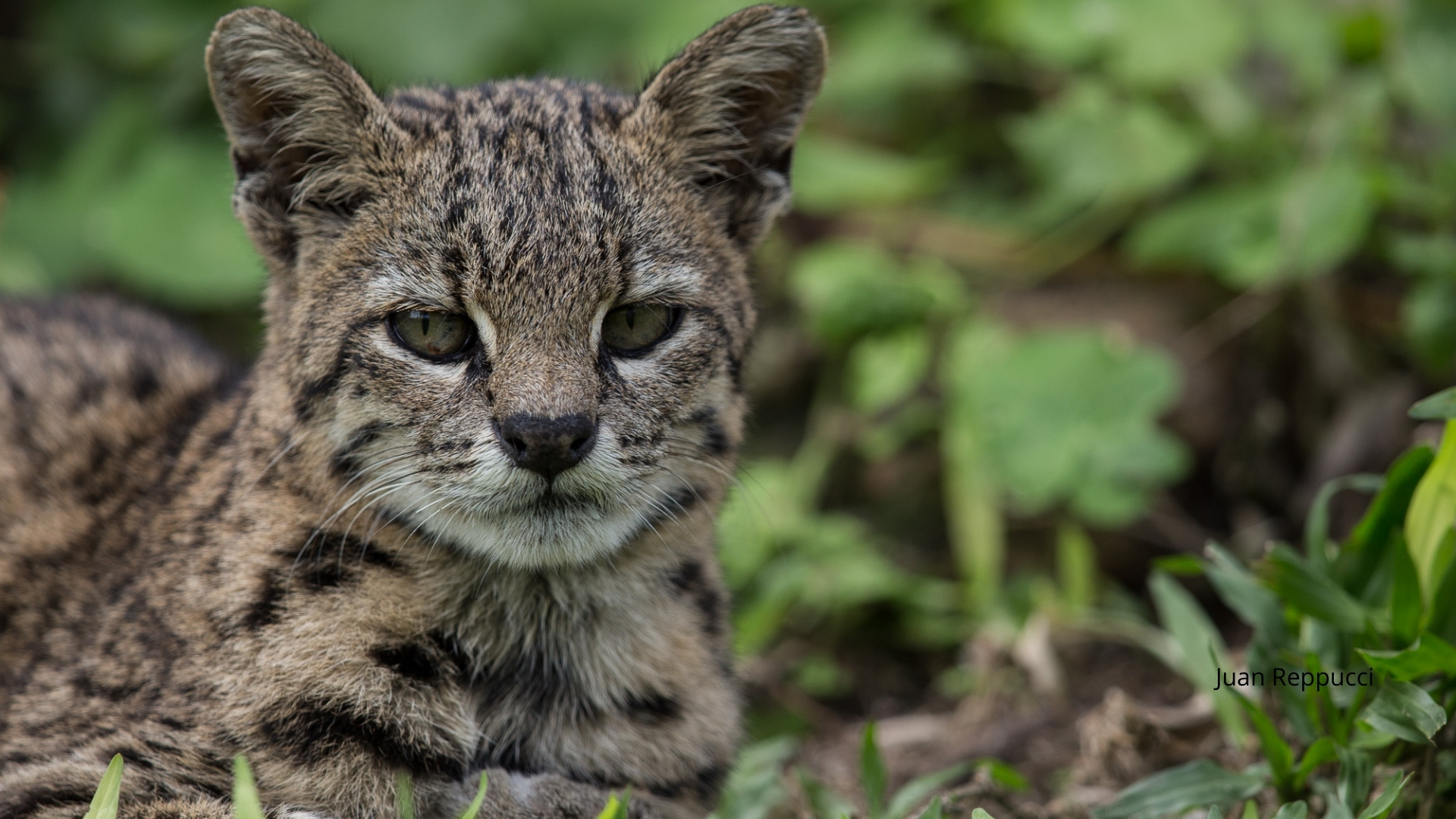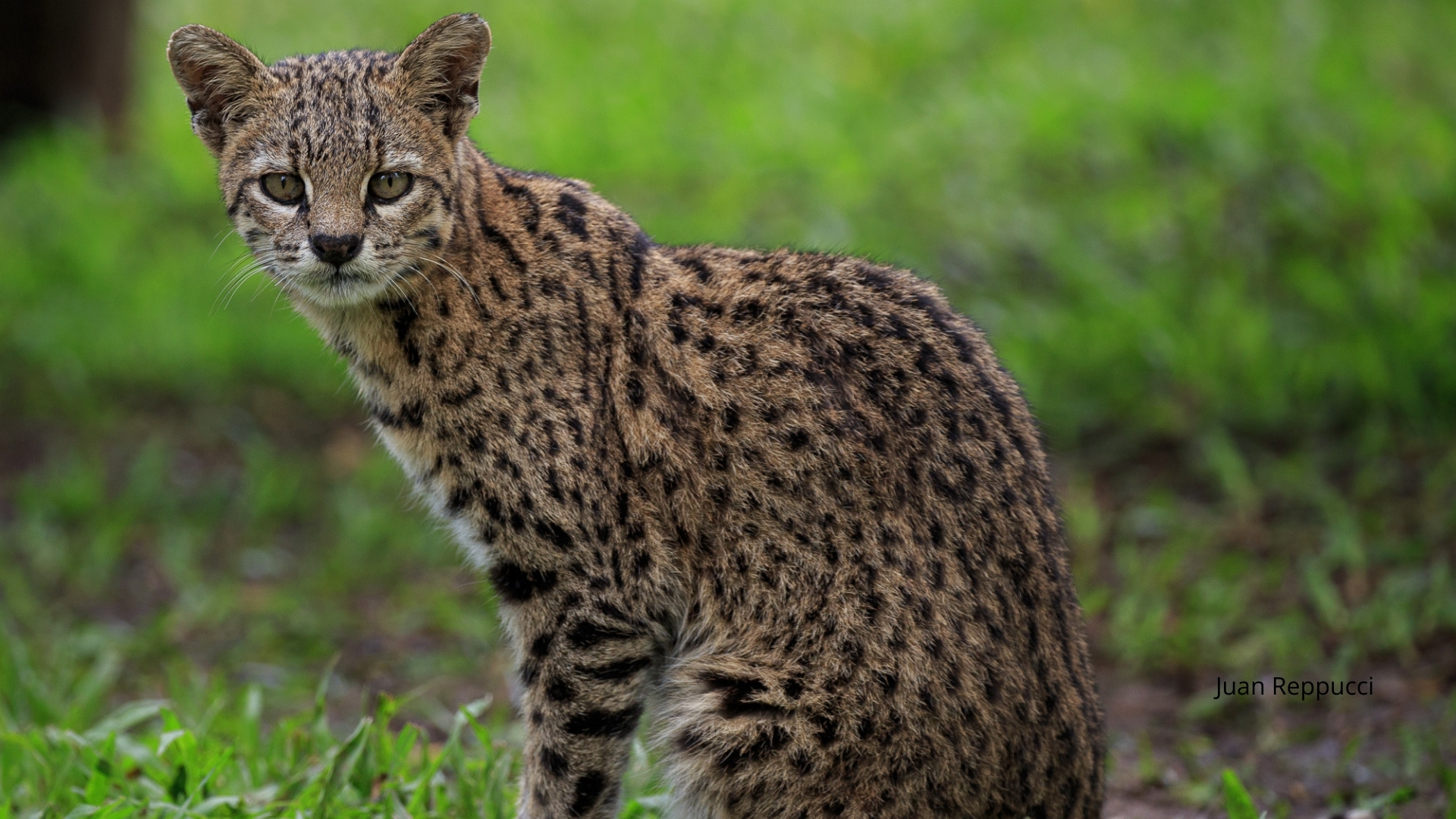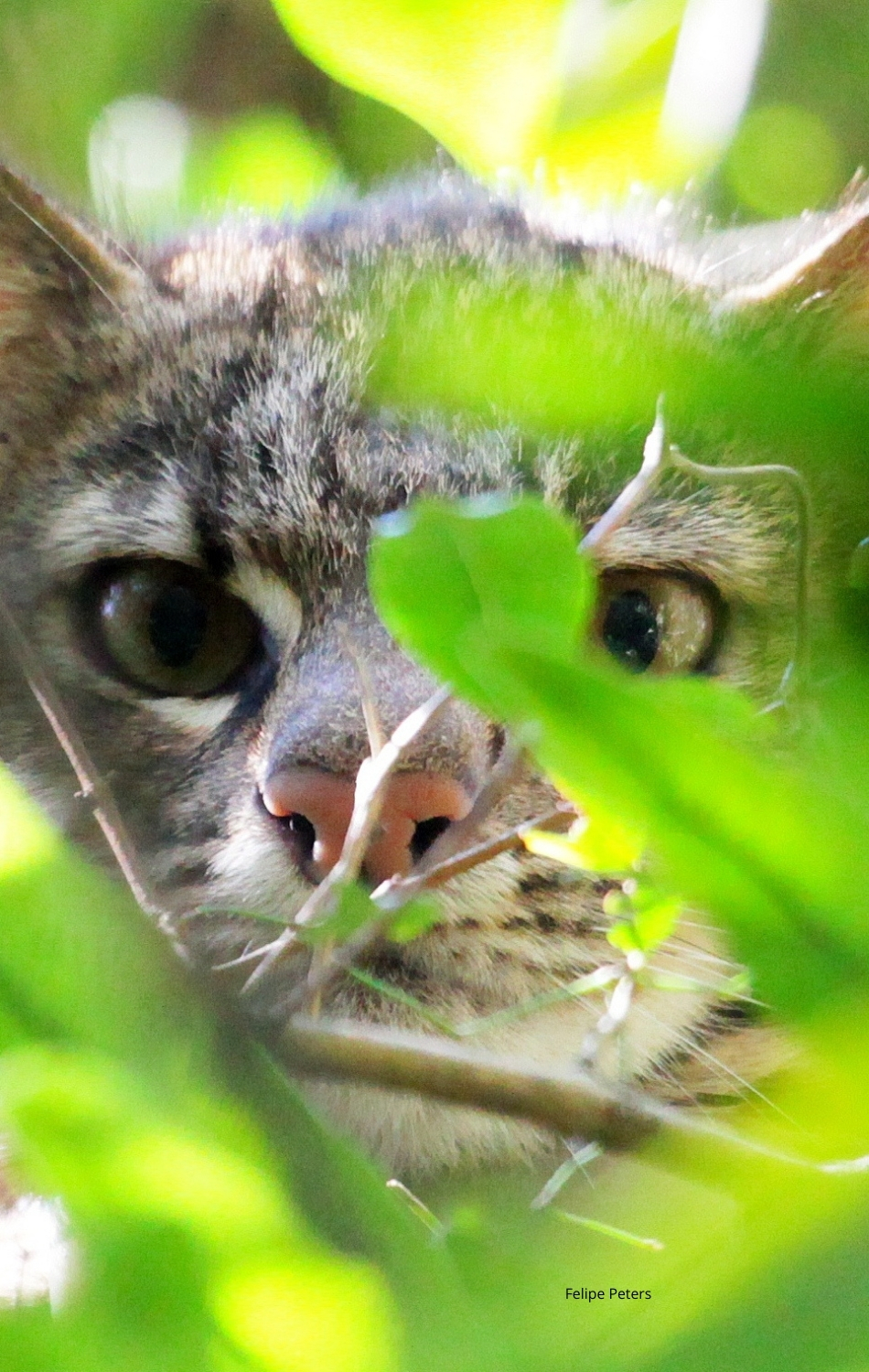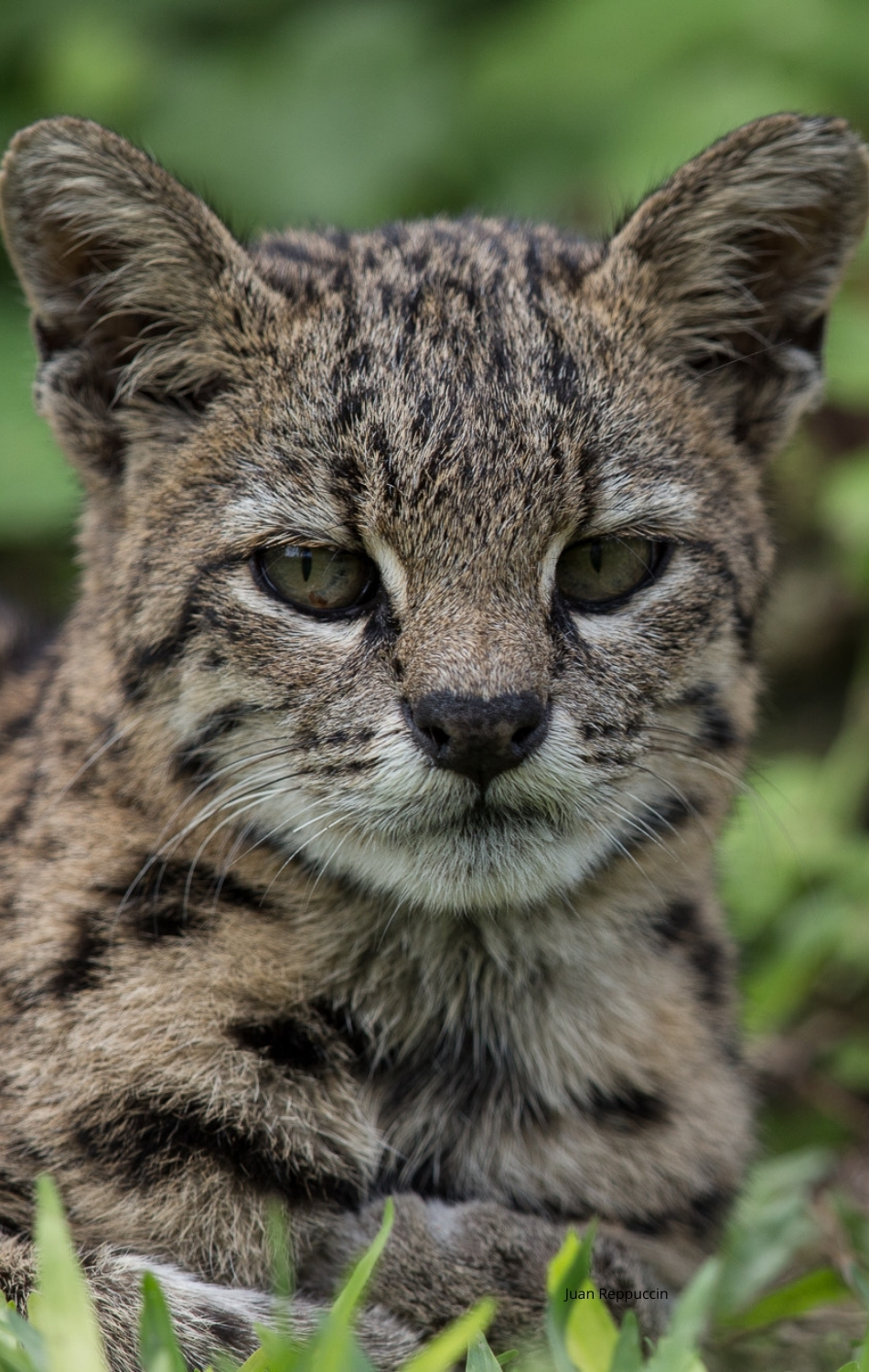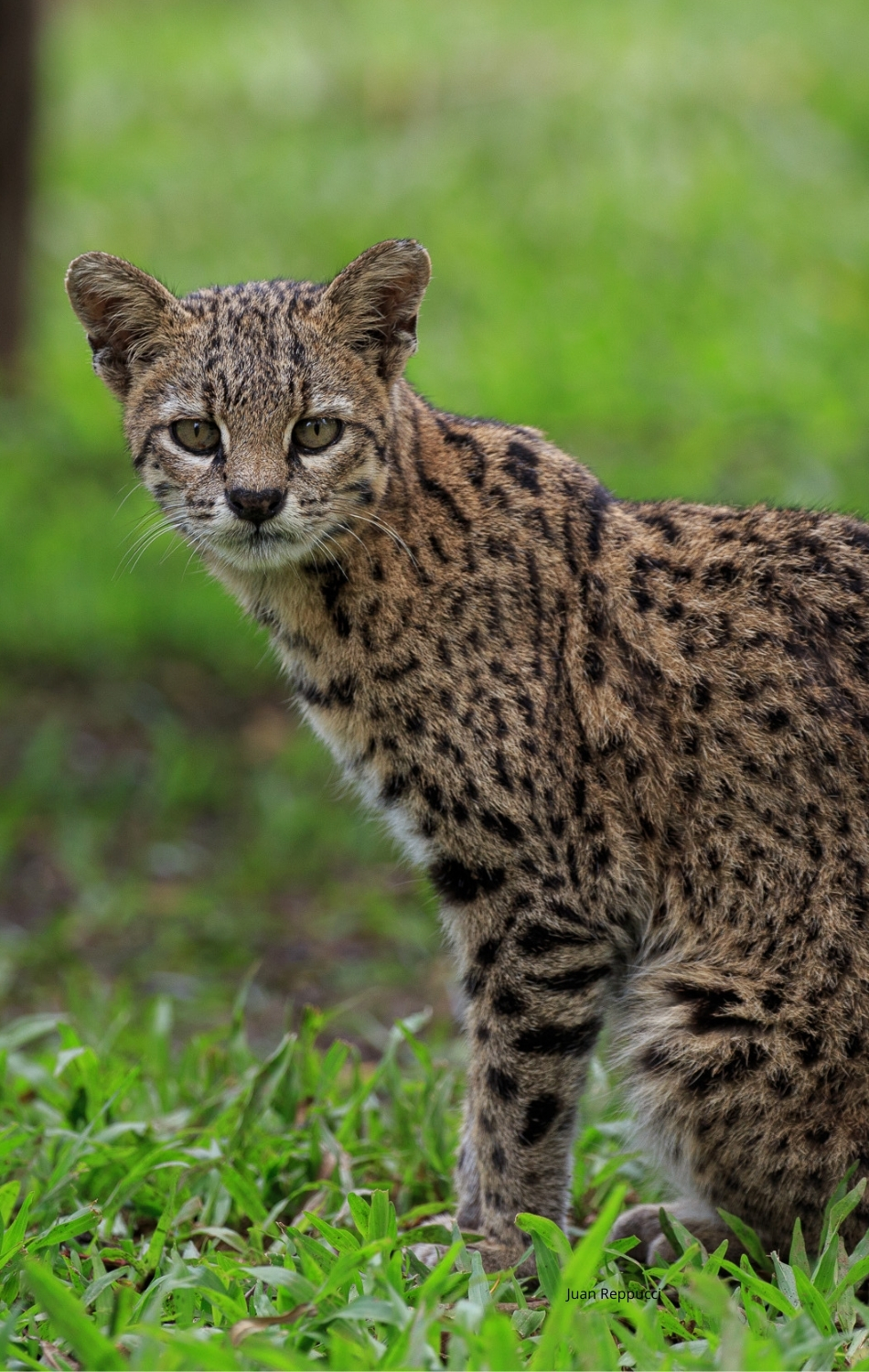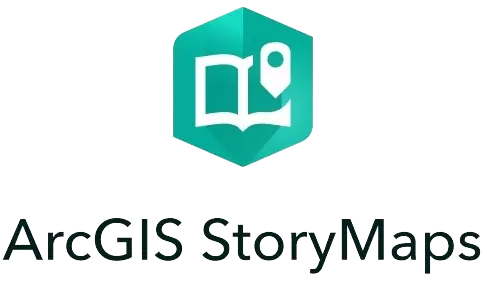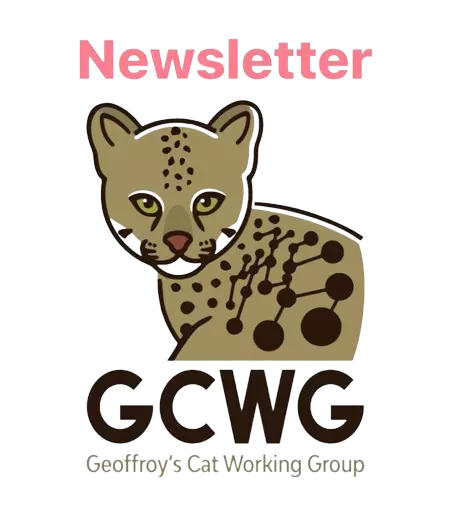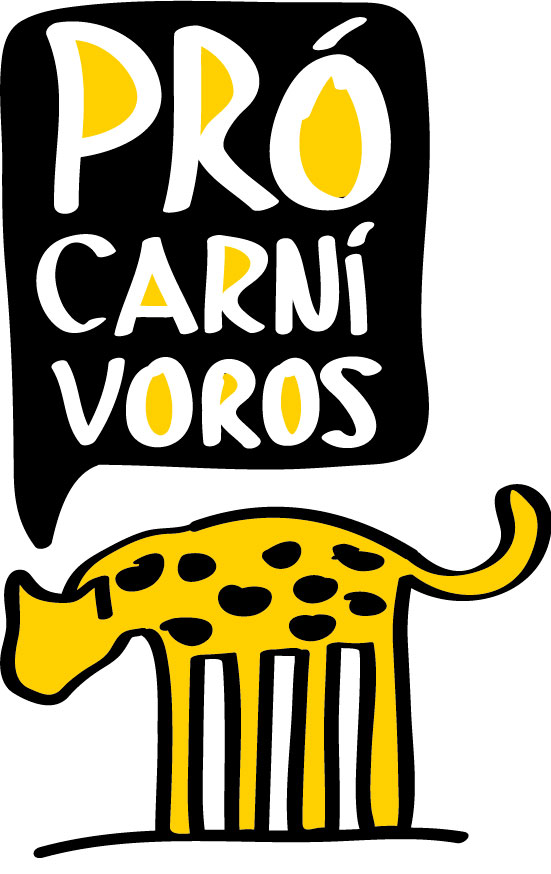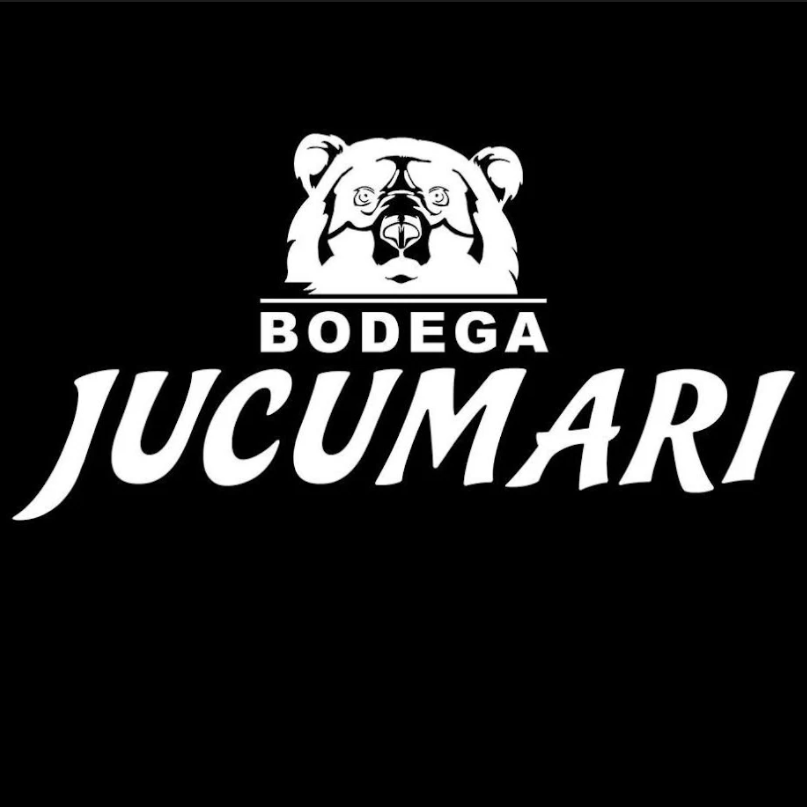Geoffroy's cat
The Geoffroy's cat (scientific name: Leopardus geoffroyi) is a small felid that is found in south-central South America.
Species distribution occurs from southern Bolivia to southern Argentina and Chile.
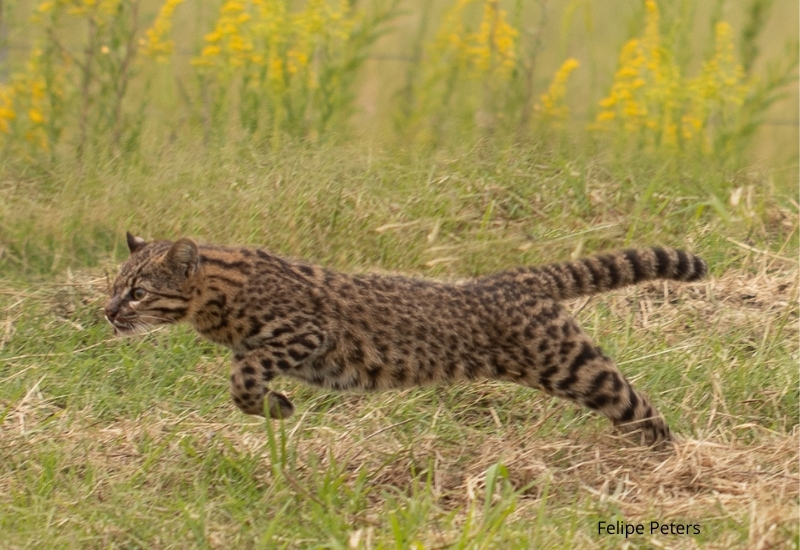
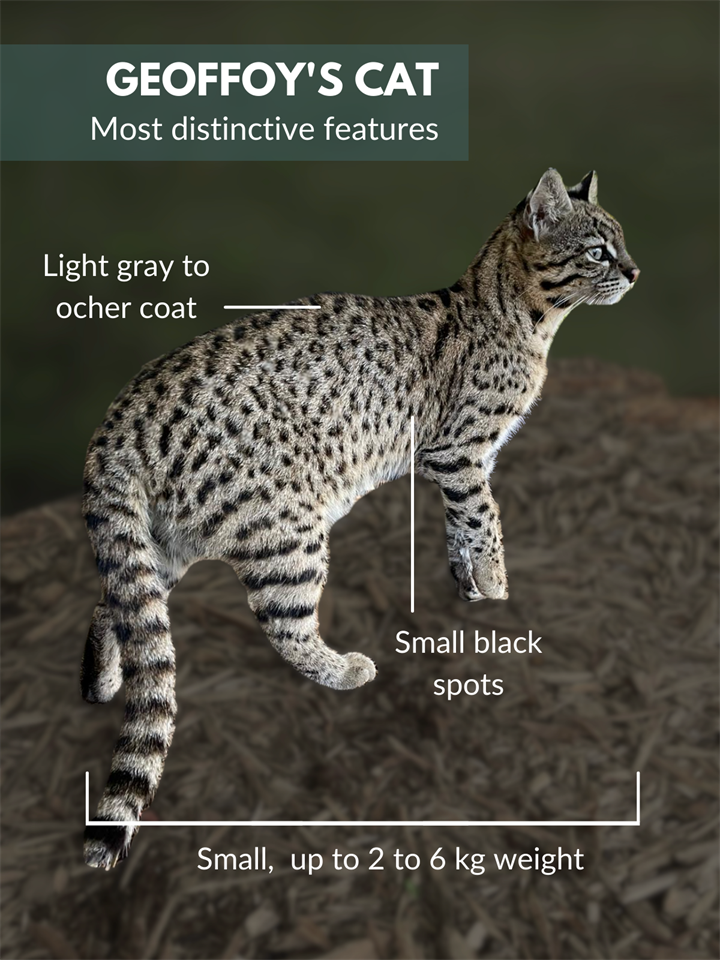
How to identify the wildcat?
The individuals present the coat color from light gray to ocher, with small black spots, generally solid; in some regions there are also black (melanistic) individuals. The weight of cats can vary between 2 to 6 kg, with males being larger than females.
Habitat and Ecology
It is a solitary cat, nocturnal and typical of more open environments, such as savannas and fields with shrub cover and gallery or gallery forests. In these open areas there are records associated with landscape modified by human activities, for example, pastures and agriculture, as well as in areas with dense, shrub and tree vegetation, probably related to the availability of prey and the need for protection.
Although considered to be solitary species, these cats seem to have a certain level of coexistence tolerance, even among unrelated individuals.
The diet is based largely on vertebrates, mainly mammals, small rodents, but also birds, fish, reptiles and amphibians.
.jpg?=37)
Threats
The species is not considered threatened globally, but in several regions it is categorized as threatened locally.
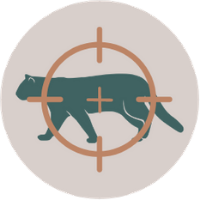
Retaliatory killing
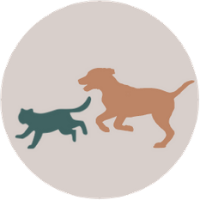
killing by dogs
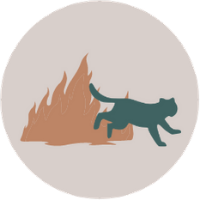
Fires
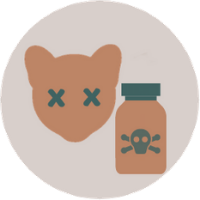
Poisoning
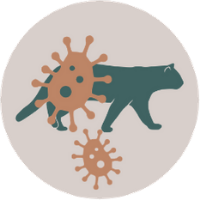
Diseases
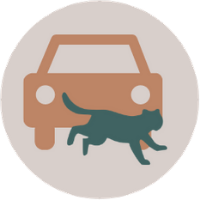
Roadkills
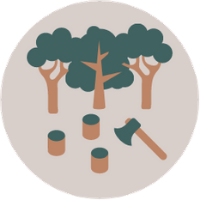
Habitat alteration and destruction
Who we are?
The Geoffroy’s Cat Working Group (GCWG) is a network of conservationists, researchers and enthusiasts. We aim to help the survival of Geoffroy’s cat wild populations and natural habitats across their entire distribution range. Our network was created in December 2020 and we already have more than 40 members spread across the six countries where this species lives.
Our strategy
People need to know the species, its biology and threats to conservation to support our efforts. We will use social media to raise public awareness and, at the same time, carry out environmental education campaigns in local communities.
We are now collectively identifying the local factors that threaten the wildcat, in order to prioritize actions. Each member's project has its own objectives and aims to answer different questions related to the species. However, all of the projects in our working group involve the conservation of the species among its objectives, and the GCWG will build on these pre-existing projects. We are supporting conservation actions such as:
- Awareness programs with children and using social media to reduce future threats;
- Surveys and monitoring of wildcat populations in different regions of their distribution;
- Alignment and application of government policies (local, regional and national);
- Partnerships and financing for existing rescue, rehabilitation and release centers;
- Actions to reduce pedestrian accidents (speed reducer, fences, outdoors, etc.).
- Reduction of conflicts
- Finally, when necessary, we will support research aimed at improving our understanding of the ecological needs of this wild cat.
During our first year, we are selecting projects that are already running or intend to initiate mitigation actions as our priority projects. The projects are already committed and engaged and GCWG are helping and supporting each one GCWG in conservation actions.
Map of the location of our projects:
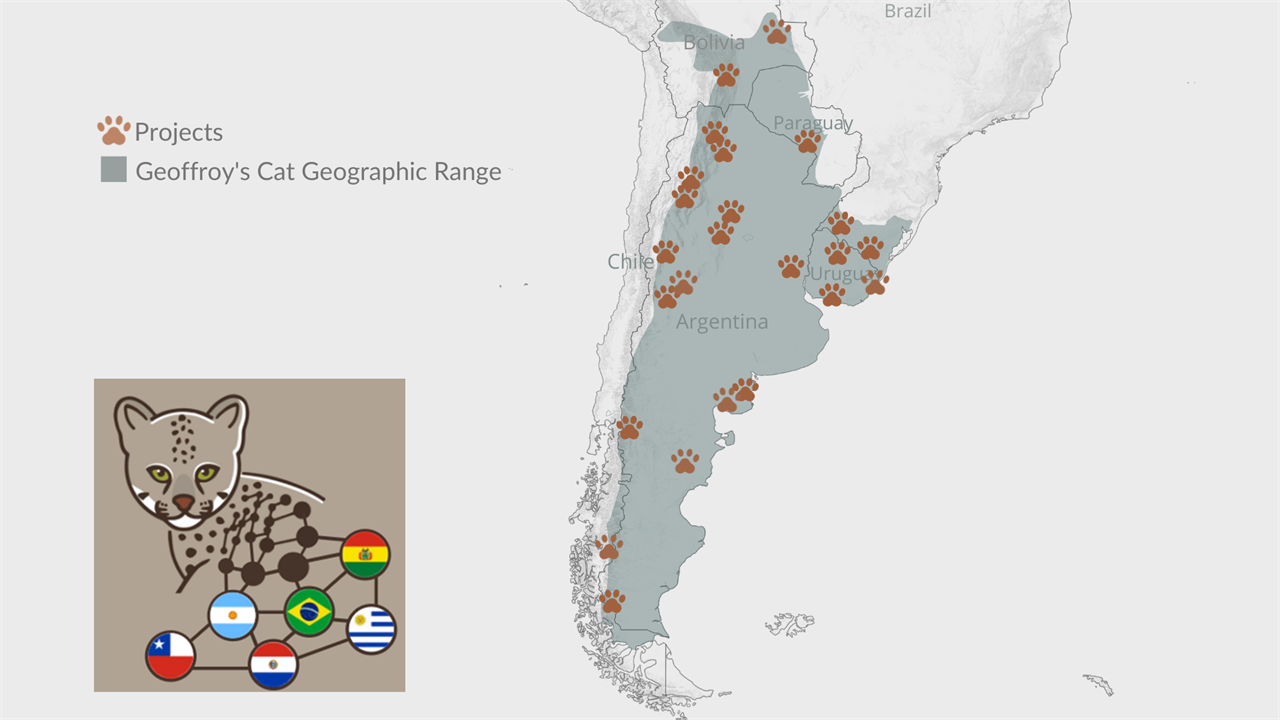
Partner institutions:
Our actions
Actions
Our actions are designed to reduce the threats of the species in the different places where it occurs. The actions are carried out based on the local culture and on the results of scientific studies.
We have already obtained financing for 14 projects of the group that are already carrying out conservation actions or that are starting. The aid was donated by the Small Wild Cat Conservation Fund and the Shared Earth Foundation.
Environmental education
Clique aqui e confira mais detalhes sobre Environmental education
Saiba mais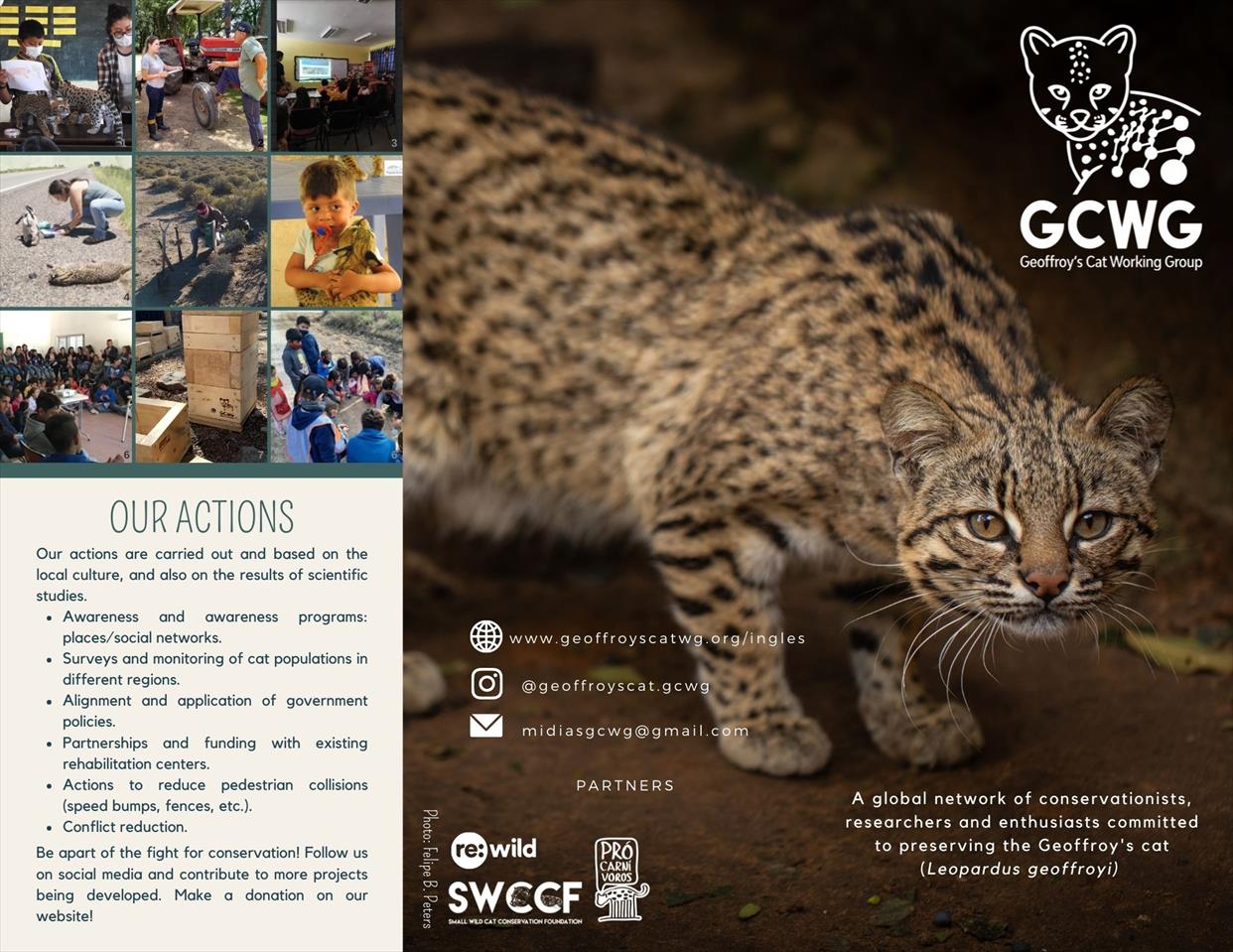
Production of educational material
Clique aqui e confira mais detalhes sobre Production of educational material
Saiba maisProjects
We have developed and supported different conservation projects spread throughout the distribution of the species, our projects are focused on understanding the anthropic effects on the populations of Geoffroy’s cat and helping to solve them with mitigation actions.
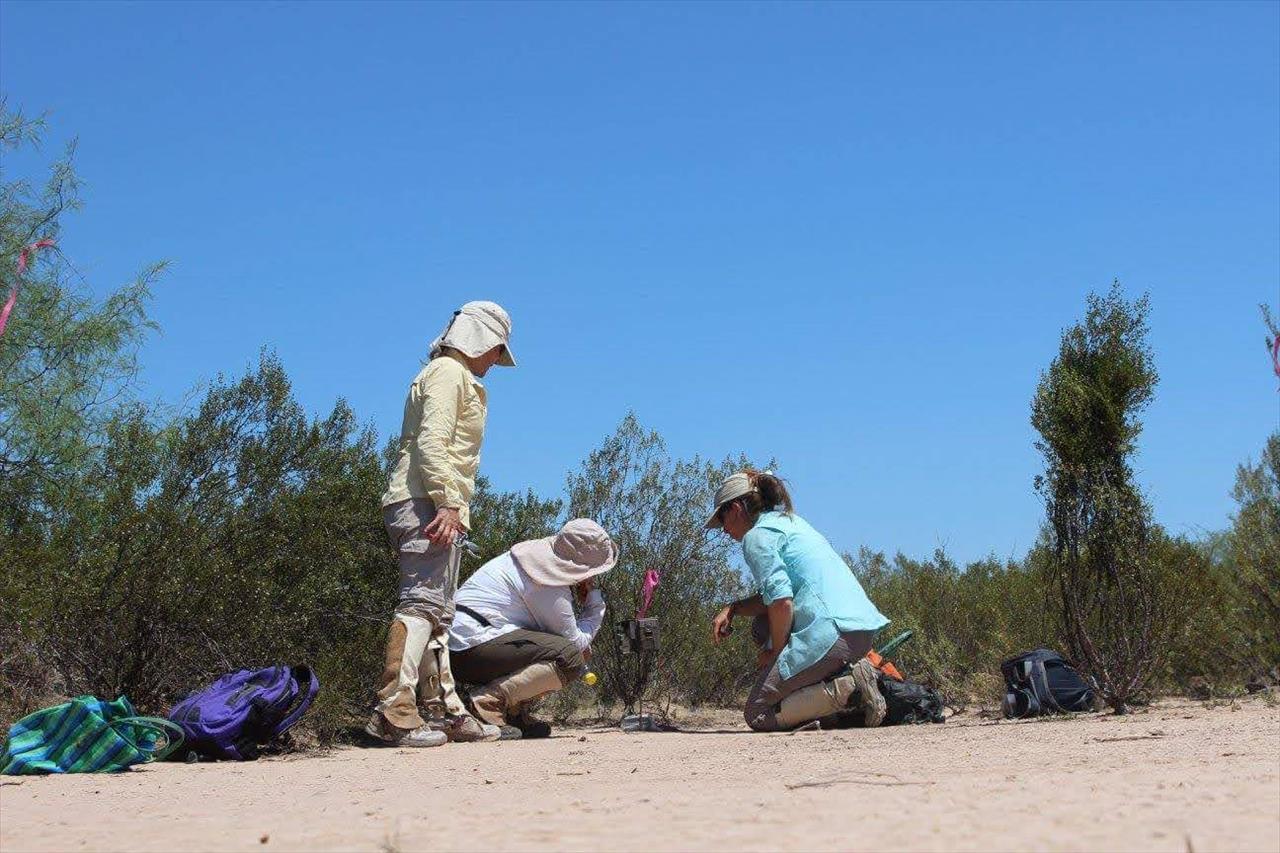
Balancing recreation and conservation in protected areas: the impact of human activities on carnivore populations
Clique aqui e confira mais detalhes sobre Balancing recreation and conservation in protected areas: the impact of human activities on carnivore populations
Saiba maisChaco & Espinal projects
Clique aqui e confira mais detalhes sobre Chaco & Espinal projects
Saiba mais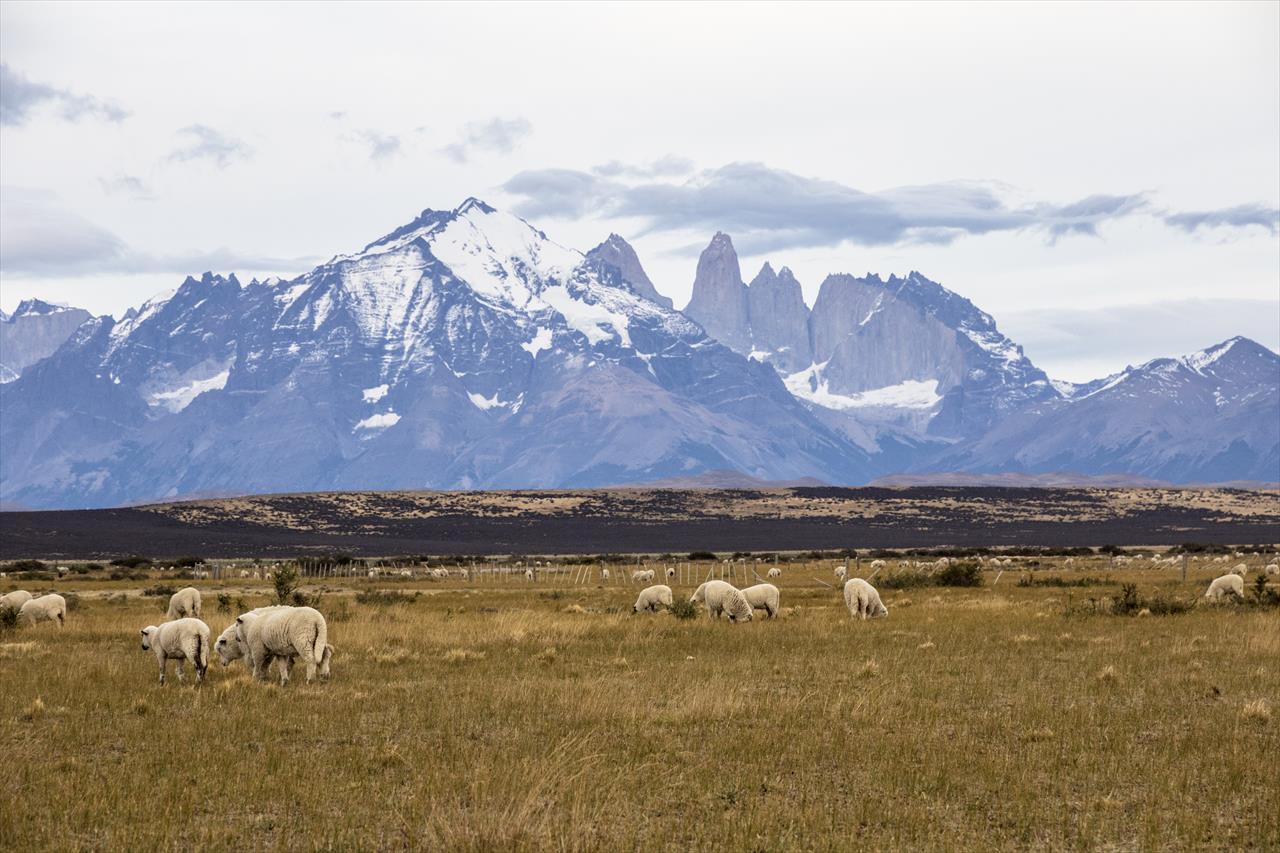
Cerro Guido Coexistence Project
Clique aqui e confira mais detalhes sobre Cerro Guido Coexistence Project
Saiba mais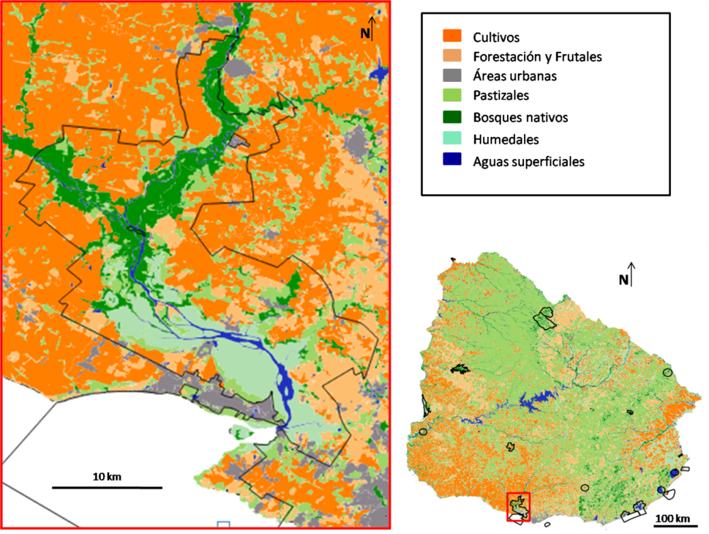
Conflict between Geoffroy's cat (Leopardus geoffroyi) and anthropic activities in Santa Lucia Wetlands, Uruguay
Clique aqui e confira mais detalhes sobre Conflict between Geoffroy's cat (Leopardus geoffroyi) and anthropic activities in Santa Lucia Wetlands, Uruguay
Saiba mais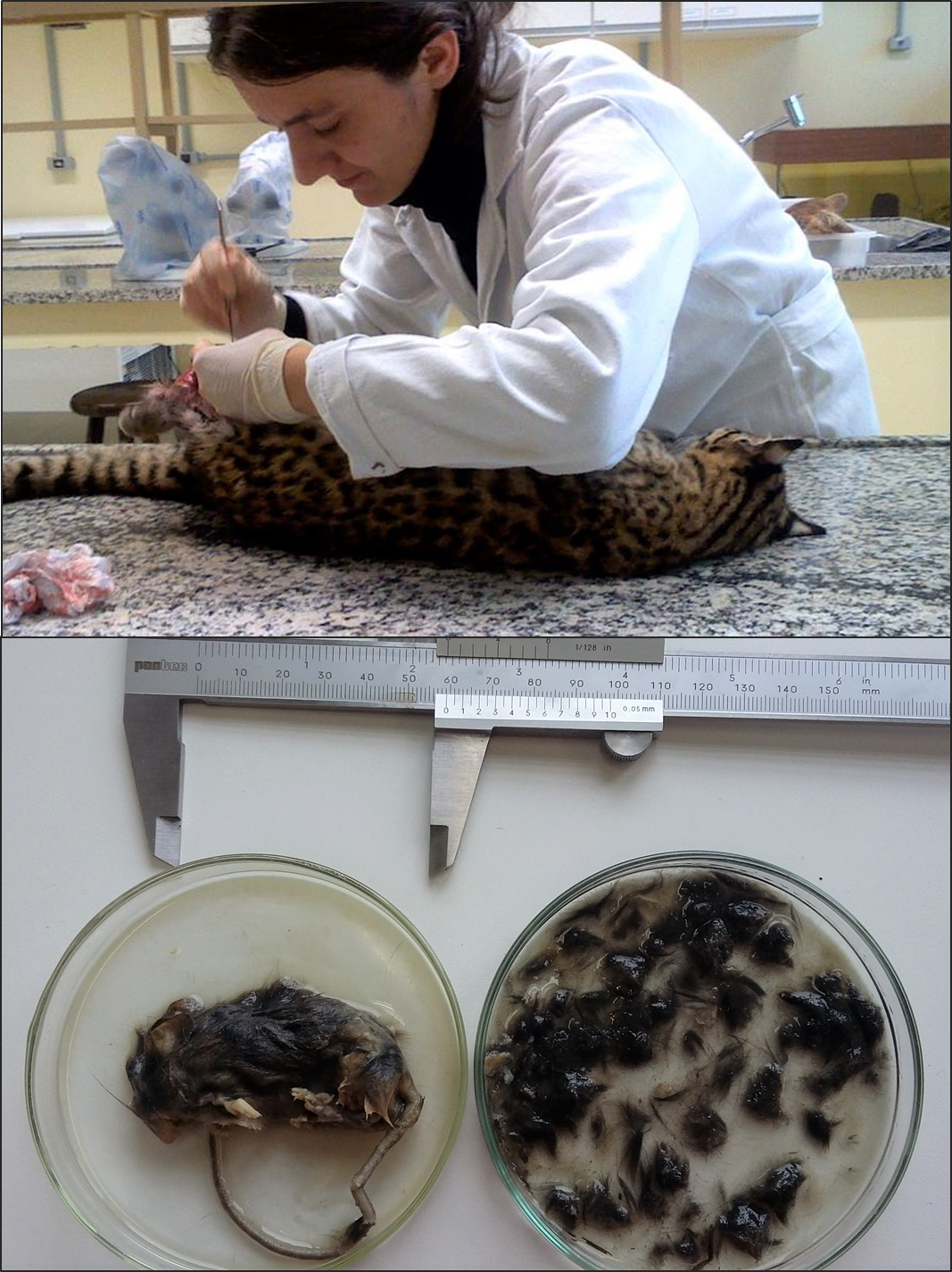
Trophic ecology of sympatric small cats in the Brazilian Pampa
Clique aqui e confira mais detalhes sobre Trophic ecology of sympatric small cats in the Brazilian Pampa
Saiba mais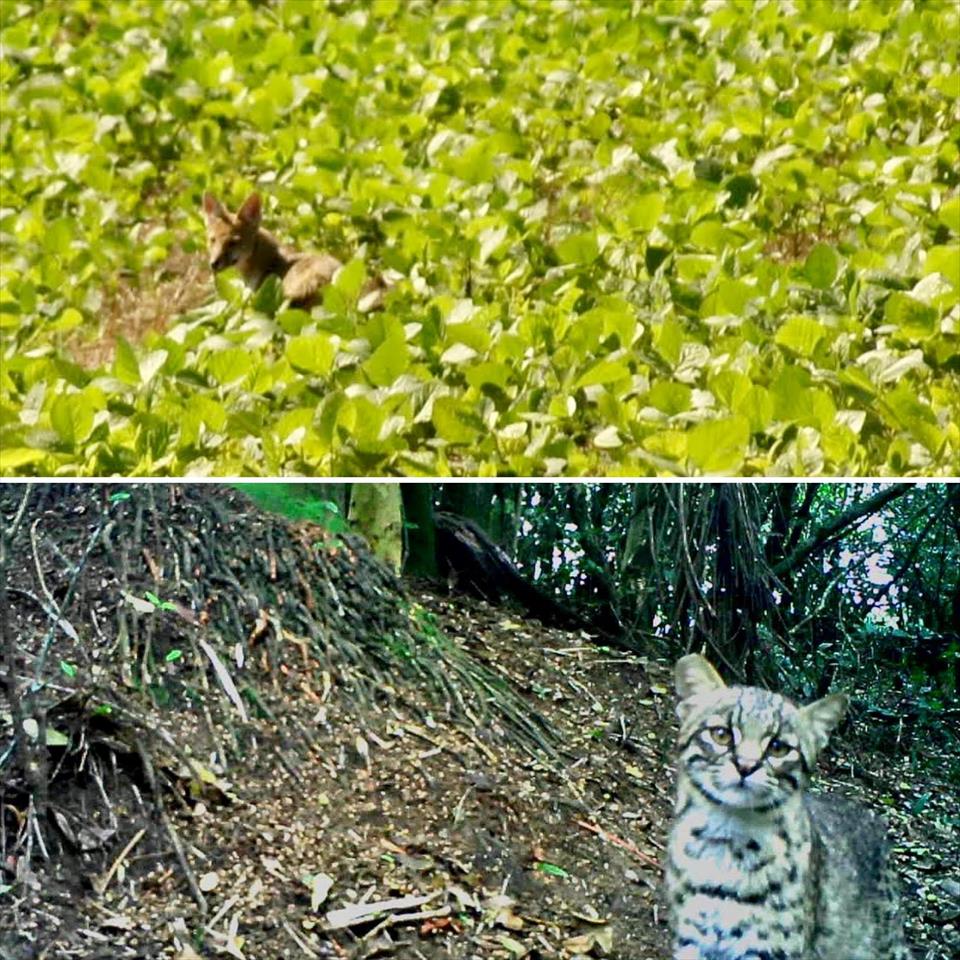
Effects of Human Disturbance on Occupancy and Activity Patterns of Carnivora (Mammalia) Species in the Uruguayan Savannah
Clique aqui e confira mais detalhes sobre Effects of Human Disturbance on Occupancy and Activity Patterns of Carnivora (Mammalia) Species in the Uruguayan Savannah
Saiba maisFelids on highways along the Brazilian Pampa: priority stretches and mitigations
Clique aqui e confira mais detalhes sobre Felids on highways along the Brazilian Pampa: priority stretches and mitigations
Saiba maisActions
Actions
Geoffroy's Cat Day
.jpg?=57)
January 28th is the world Geoffroy’s Cat Day, 2021 was the first year that we celebrated that day with a lot of engagement on social media! Artists made beautiful illustrations and many people got involved around the globe.
Let's celebrate every year! Don't miss it and come celebrate with us! Partnership with http://www.geoffroyscats.com.
.jpg?=15)
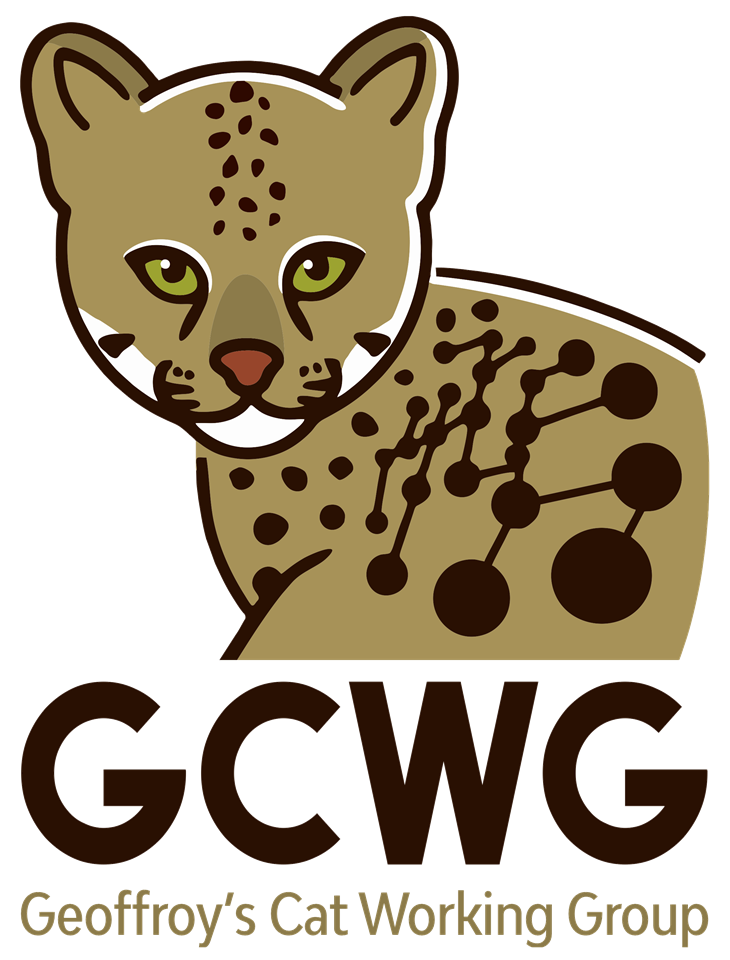
Contribute to the conservation of Geoffroy's cat

|
Email |
|
Fale Conosco!
Tem alguma dúvida, sugestão ou crítica a fazer? Então entre em contato conosco. Suas dúvidas serão esclarecidas e sua opinião é fundamental para o nosso aperfeiçoamento.
